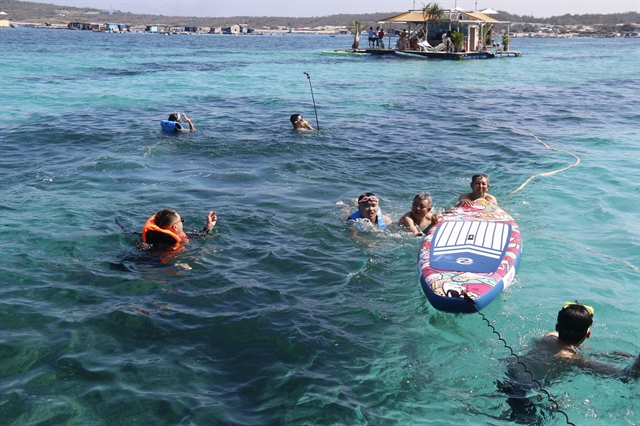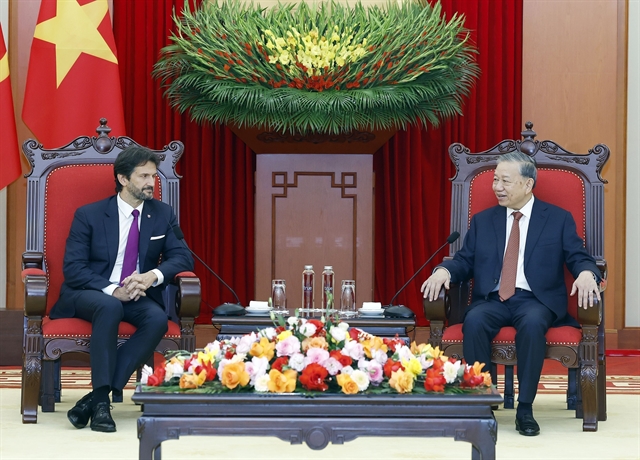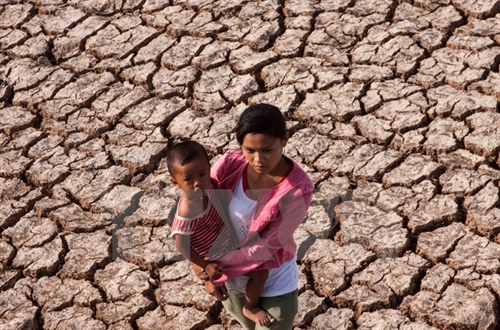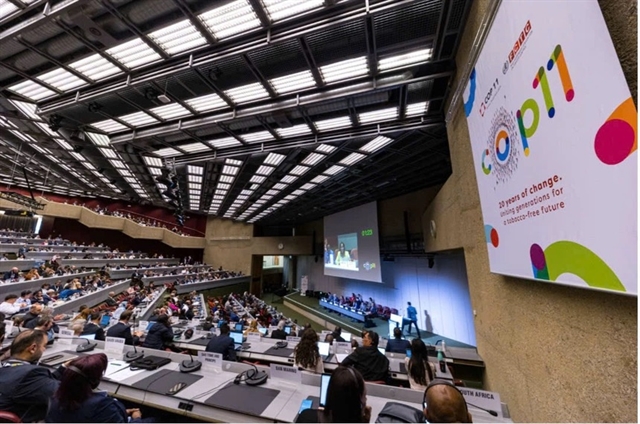 Environment
Environment

Việt Nam is urged to strengthen the role of women in climate change adaptation and natural disaster risk management, heard a roundtable workshop held yesterday in Hà Nội.
 |
| A young women holds her son standing in a drought field in Mekong Delta Sóc Trăng Province. Việt Nam is asked to improve women’s role in adapting to climate change.— VNA/VNS Photo Duy Khương |
HÀ NỘI — Việt Nam is urged to strengthen the role of women in climate change adaptation and natural disaster risk management, heard a roundtable workshop held earlier today in Hà Nội.
The call was made in the context of climate change and natural disasters becoming more complicated in the coastal country.
Statistics from the Ministry of Agriculture and Rural Development showed that natural disasters, including drought, saltwater intrusion, torrential rains with whirlwinds, and prolonged severe cold weather in the first six months of this year, killed 37 people, injured 108 others, and causing damages estimated at VNĐ16.9 trillion (US$757 million). The damage during the first six months of this year is nearly double than that of the entire 12 months of 2015.
Nguyễn Thị Tuyết, vice president of the Việt Nam’s Women Union, said no one else but women had to prepare foods as well as the necessaries of life before, during and even after a storm or a flood for a whole family. They, especially farmers, also directly planted rice and crop.
Therefore, women should receive more promotion to participate in committees of flood and storm prevention and control, or natural disaster control at local levels, Tuyết said.
From making plans on climate change adaptation, natural disaster prevention and control to running those plans, all need the involvement of women, she said.
Shoko Ishikawa, UN Woman Country Representative in Việt Nam said women were playing an important role in dealing with climate change and disasters. They are the first ones to take care of family members when disasters strike.
Disaster risk reduction planning and adaptation to climate change would not be successful without including the perspectives of women. Community resilience to disasters could not be achieved without increasing the resilience of women, she said.
“We need to capitalise on women’s resourcefulness as we tackle the challenges of climate change,” she said.
Mary Robinson, UN Secretary-General’s Special Envoy on El Nino and Climate, said at the roundtable workshop that climate change is becoming very serious in all countries.
“It was very encouraging for Việt Nam as clearly the country did understand the value of ensuring the full participation of women […in coping with climate change] to make the community more resilient [to climate change],” she said.
If you wanted to change the behavior in a family, it was more likely the woman - a mother, who would be able to change that behavior, and be able to make the family more resilient, she said.
How to implement
Tuyết, from the women’s union said to do it, the Government was needs to assign an agency to take responsibility in managing all programmes or projects related to improving women’s role in climate change adaptation and natural disaster prevention and control.
Only when the agency is established, would the programmes and projects be smoothly run, without scattering and overlapping, she said.
Nguyễn Văn Ngân, from southern Bến Tre Province’s Agriculture and Rural Development Department, said it was necessary to provide short training courses for local women in planting rice and crops to adapt to climate change impacts as well as natural disasters.
Which kind of trees should be planted, which kind of animals should be raised to better adapt to climate change. Local women need to be told, he said.
Trần Quang Hoài, deputy head of Water Resources Directorate under the Ministry of Agriculture and Rural Development, said authorised agencies were asked to conduct overall assessments on models piloted throughout the country so far to raise women’s resilience to natural disasters. After that, we would multiply good models.
Việt Nam is one of countries most vulnerable to, and most affected by climate change and natural disasters. The Global Climate Risk Index 2015 for the period 1994-2013 ranked Việt Nam in seventh place. With the majority of the population living in low-lying river basins and coastal areas, it is estimated that more than 70% of the population are at risk of multiple hazards.—VNS




